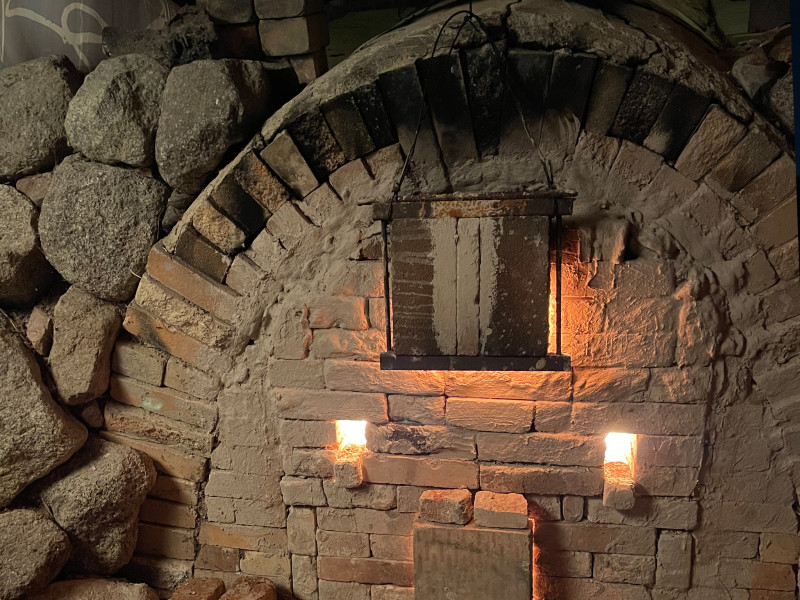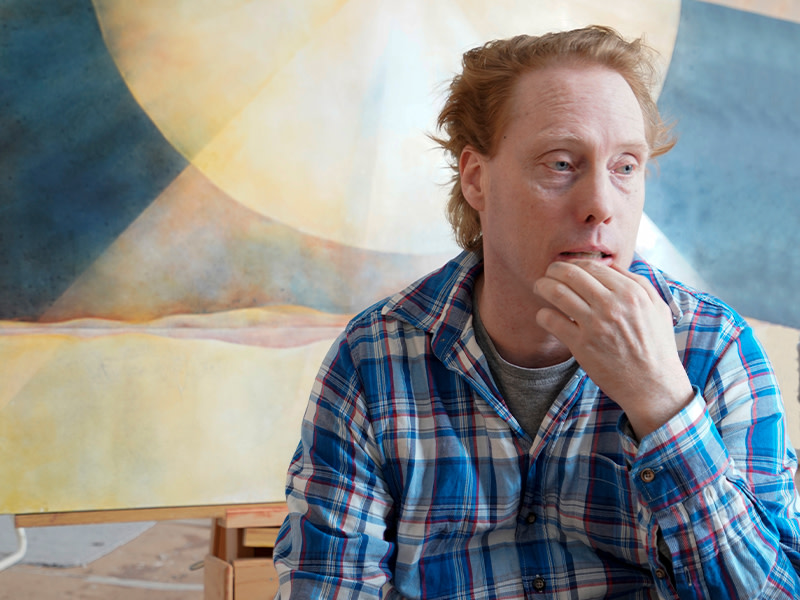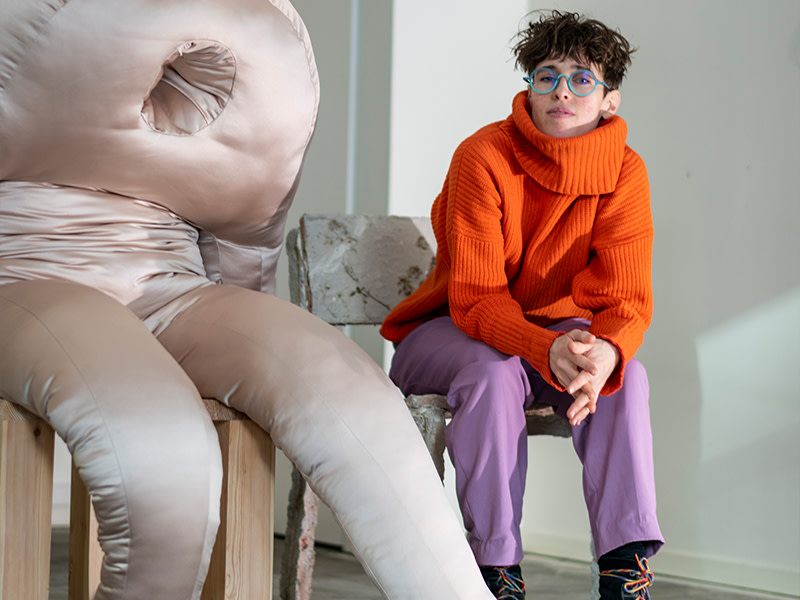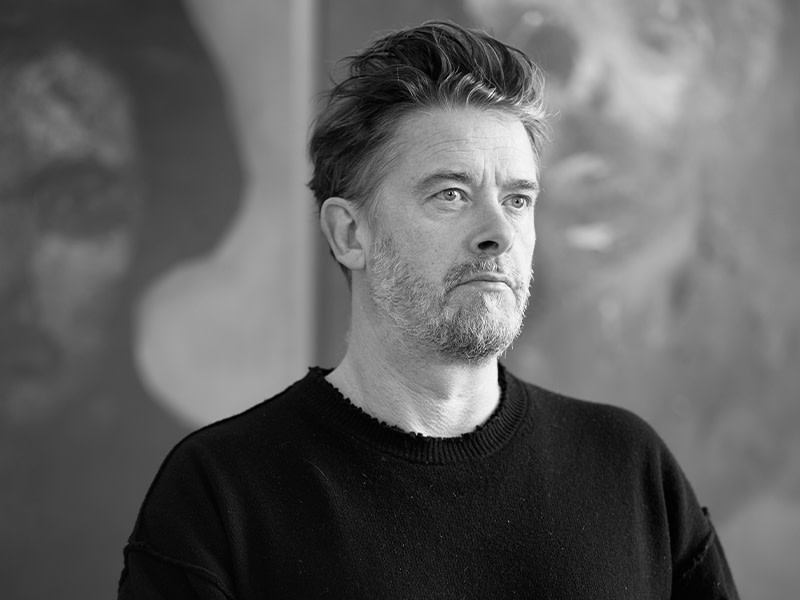In conversation with Ohad Meromi By Michael Storåkers
Interview
April 25, 2024
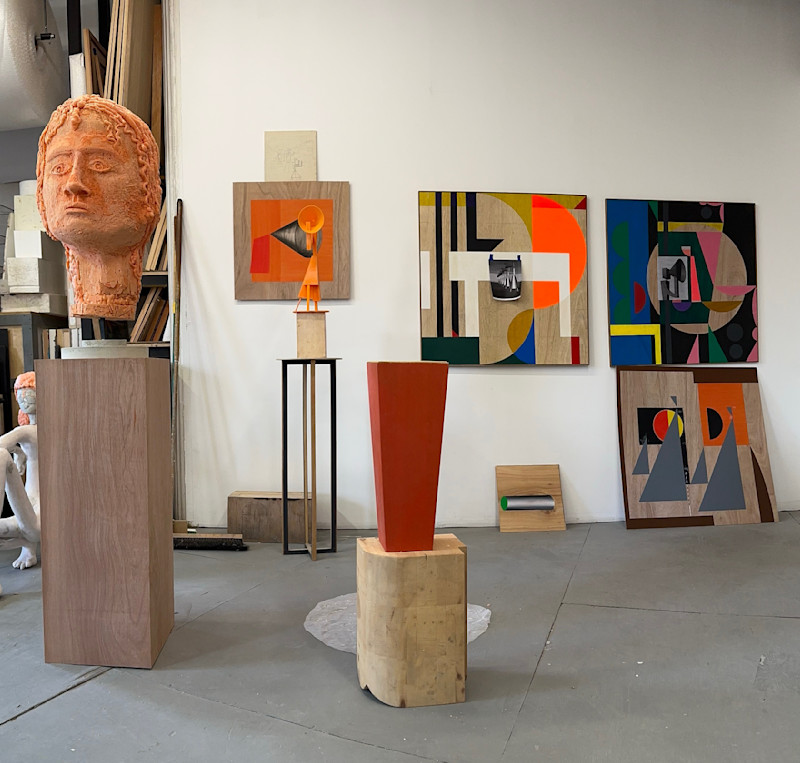
Welcome back to CFHILL! Last time we presented your work in the group show All movements have memories in 2019, your artistic practice explored the concepts of dance, movement, and geometrical diagrams, often in relation (or contrast) to the body and its capabilities. How has the theme of movement and dance evolved in your current works?
— Dance is at the very centre of my thinking. Noa, the show’s title as well as that of one of the sculptures, means “move” in Hebrew, and is also a homage to the choreographer Noa Eshkol whose dance notation system and iconography I have been returning to over the years.
Your recent exhibit at EXPO Chicago 2024 featured two paintings and two sculptures. This time at CFHILL, you’ve explored painting to a greater extent – several works of acrylic paint and resin on panel, and three foam sculptures covered in resin. What’s it like for you when working in two quite different mediums, painting vs. sculpture, do you work on these mediums in parallel, does one inspire your practice in the other?
— I’m still hesitant to call them paintings, as I think of them like a sculptor: I’m preoccupied with the sense of space and being in space in the 2D work. Maybe collage is a better description, even if they are sometimes painted, because much like a collage, they are constructed from blocks: one shape is added to another. If “being in a body” is a notion I’m exploring in the sculptures, the 2D work is very much about creating a visually immwwersive space, where one basically lets go of one’s body and the “politics” that constrain it. There is no scale. And there is a porous flow between things that can’t happen in real space. As a representation of space there is room for daydreaming and play. It’s my utopian horizon. And you get to have fun with colours which I try to transfer back to the sculptural practice.
Let’s get into the details of your technique: for painting, you work with acrylic and collage, on panel. What sort of panel do you use, and do you lacquer your paintings? Could you elaborate on the process for combining the materials, and perhaps tell us what painting represents for you.
— It’s simple plywood. I like being able to build on top and then “carve” behind. There is one piece that is basically a superimposition of a system of painted shapes over a composition of holes. I sometimes use clear resin to combine with the flat finish of the wood. I’m interested in producing a rich surface even though I start from the Arte Povera-like simplicity of the plywood.
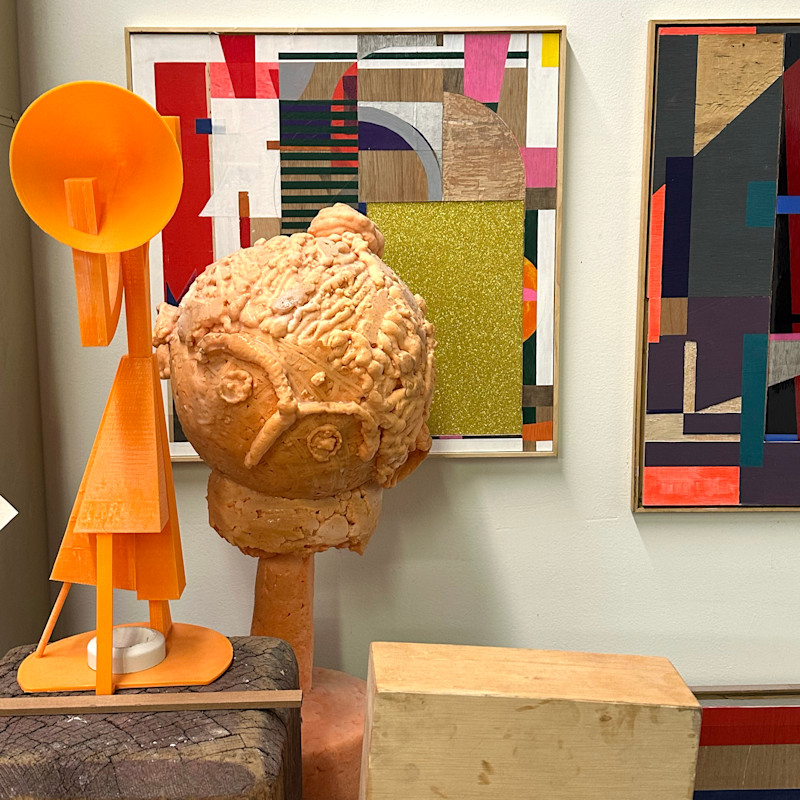
And what can you tell us about the sculptures. The technique – foam, coated in resin – as well as what they represent?
— Originally, I was looking for a material that would allow me to make a quick sketch in real space and in large scale, like gesture drawing in response to movement. Then this idea of drawing in space became useful for a very intuitive process. Things can be changed and reconfigured. The epoxy resin adds another, slower negotiation of the image, a different mode of commitment. I like combining this strange, space-age material with classic subjects. You could call this my futuristic archaeology.
Other themes prevalent throughout your works are very philosophical – relating to identity, collective memory, and social justice. Perhaps more fundamental than that, you often explore the idea of the utopia, humanities strive towards utopian ideas, and the pain involved in achieving those ideas. The idea of the utopia seems to underpin all your work, from the early 2000’s to present. In our last conversation, you related this idea to the pioneers of the Russian avant-garde movement, which is rooted in the transformation of the Russian empire into the Soviet Union… How do you think about this theme today?
— There is definitely a utopian streak in the core of my thinking, a search for humanity and hope. But as things progress, I find myself in a bipolar cycle of hope and despair. In a way it is the hopeful part that makes art and believes that there is a purpose in this project. I look at historical moments that had this conviction in the possibility of making a better world. I know I’m inspired by artists and musicians and choreographers and novelists and architects that made this world more than just the gloomy place it sometimes feels like.
In a world where full-blown conflicts and wars are constantly on our minds, how has your consciousness of current politics commanded space in your artwork. Should your work be seen as a-political?
— I am shocked and depressed over what has been happening in Gaza since October 7, and scared of what’s coming. We’ve been going to protests calling for ceasefire and hostage return in tears, but no one seems to be listening. There are plenty of obvious violent villains to point fingers at, but what I feel is needed even more are voices that speak an inclusive language of peace and coexistence. Voices that paint an attainable picture of coexistence in the tomorrow’s world. I hope we are not just speaking to history, to the people that will come after the catastrophe, like the way we view the work of the Weimar Republic now. I hope a change of course is possible.
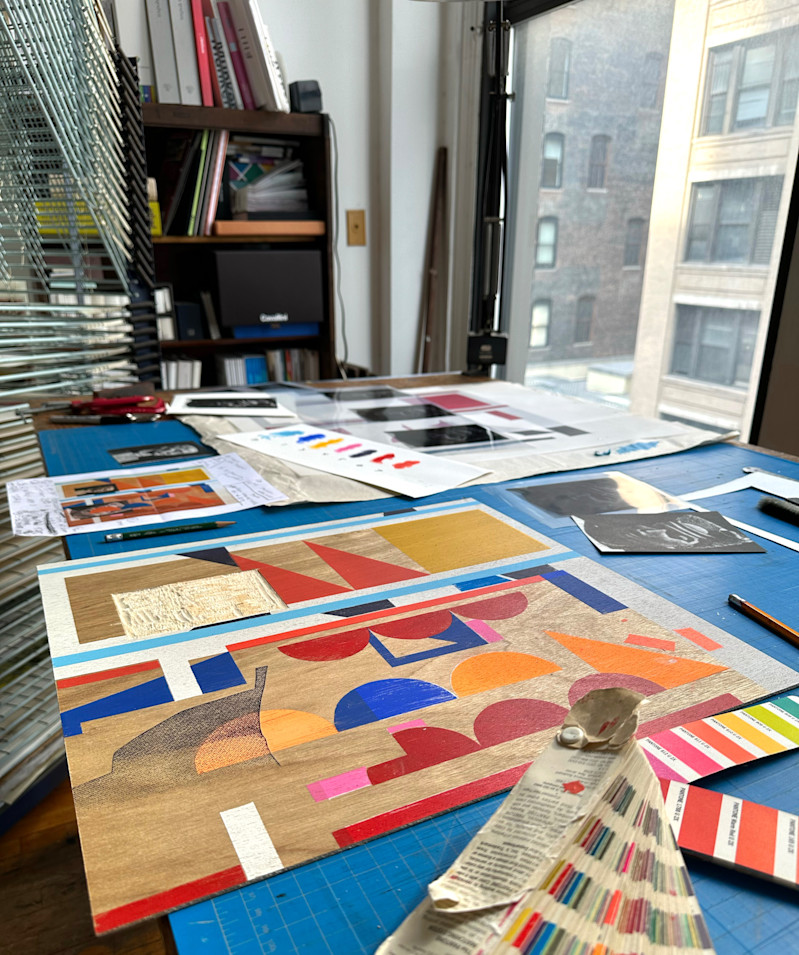
It’s certainly a dark time to consider existentialism and a utopian existence for humanity… However, we note – and celebrate – the positivity in your use of colour in a strikingly modernist style. Concepts like Modernism is often seen as a mechanism to strip the canvas from the overly complex, a way of going back to basics, if you will. You strike me as a contemporary modernist painter - what artists - and perhaps architects and modernists - would you say inspire you?
— I grew up going thoroughly through every Bauhaus book I could find. Being the son of an architect was part of it. I loved the lack of distinction between art and design. Oskar Schlemmer was a big influence, something about the surrealist egg-head dancers of his made an impression on me. And Malevich. I think that’s where I started. But there were also the reproductions of the post impressionists burned into my memory, like Gaugin. I’ll never in a million years know how to use colour like that.
There is a strong visual, and colourful language at play in your works, has this been a gradual development or have you always painted in stark colours and contrasts?
— I was just walking around in the galleries at the Art Institute of Chicago with a friend who is a contemporary art curator there. There was this amazing post-CoBrA Karel Appel I did not know. And a fantastic tiny Le Corbusier oil. Bold geometric abstraction. It’s fresh in my mind but it will stay with me for sure. Just shapes and colours. What can I say, it makes me feel at home in the world.
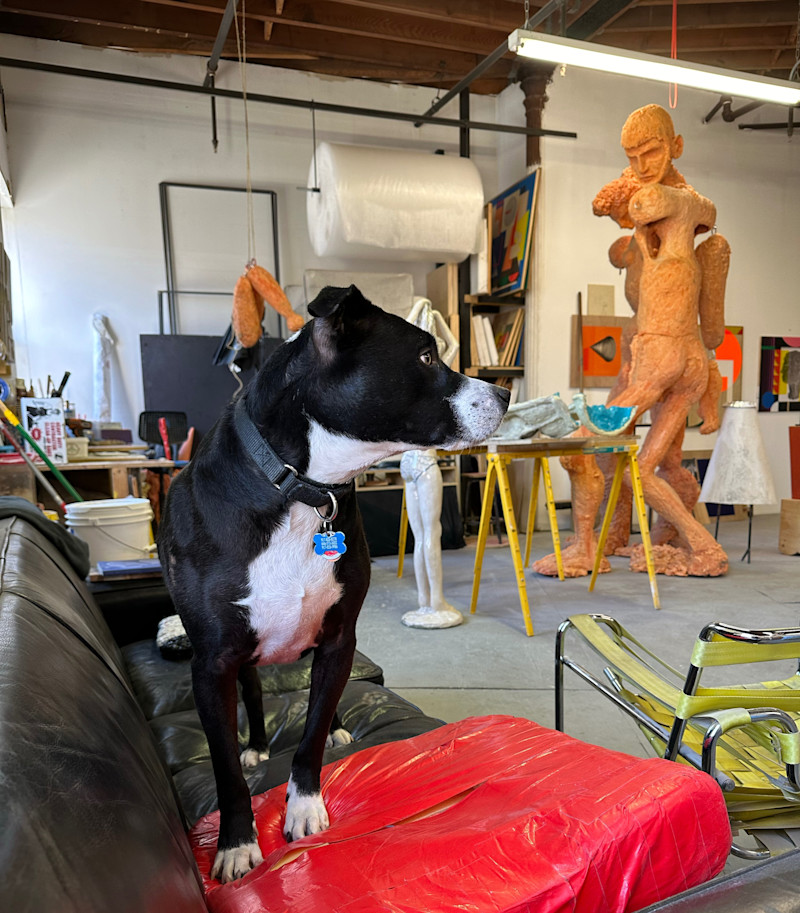
In closing, what would you like visitors to take away from your new works?
— Oh, that’s the hardest question. It’s difficult to guess what others make of my art. I hope something in it is meaningful to them. That it belongs to the things that makes them feel at home in the world.
Gallery




















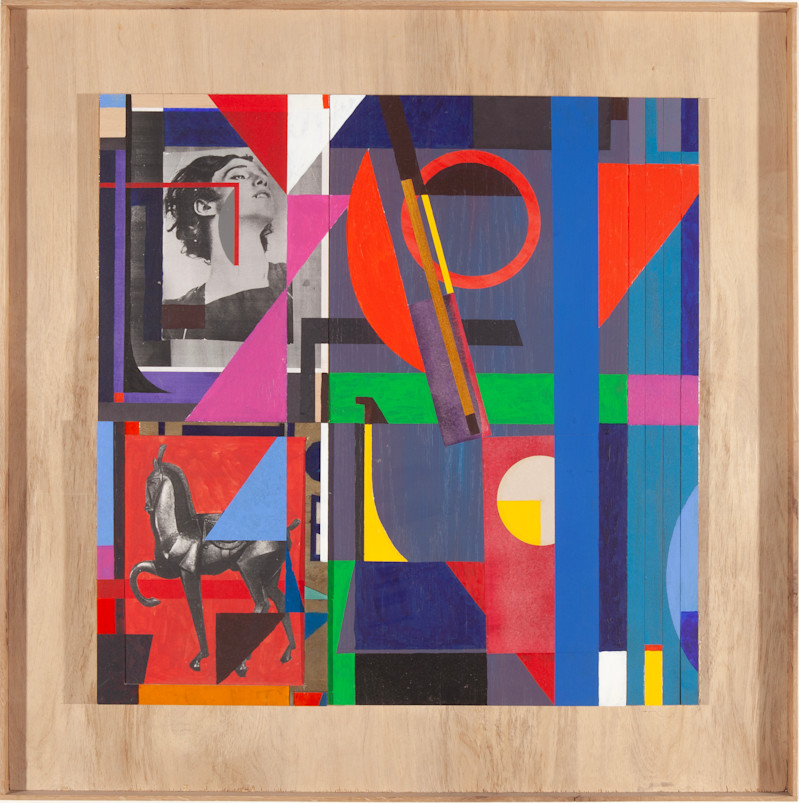

In conversation with Ohad Meromi By Michael Storåkers






















Ohad Meromi Untitled (Arches), 2022–2024, Collage and acrylic on wood, 54 x 54 cm
Ohad Meromi Untitled (Ceasefire), 2024, Collage and acrylic on wood, 98 x 98 cm
Ohad Meromi Untitled (Blue Head), 2023, Collage and acrylic on wood, 44 x 44 cm
Ohad Meromi Untitled (Agit-train 2), 2024, collage and acrylic on wood, 98 x 98 cm
Ohad Meromi Orange Horse, 2024, Polyurethane and epoxy , 80 x 80 x 15 cm
Ohad Meromi Untitled (Kibbutz), 2024, Collage and acrylic on wood, 54 x 54 cm
Ohad Meromi Untitled (Echo 1), 2024, acrylic on wood, 98 x 98 cm
Ohad Meromi Head, 2022–2024, Polyurethane and epoxy 65 x 30 x 30 cm
Ohad Meromi Untitled (Kneel), 2023, Collage and acrylic on wood, 98 x 98 cm
Ohad Meromi Untitled (Nijinsky), 2023, Collage and acrylic on wood, 86 x 86 cm
Ohad Meromi Untitled (Thinker), 2023, Collage acrylic and resin on wood, 41 x 41 cm
Ohad Meromi Untitled (Three Suns), 2023, Collage acrylic and carving on wood, 98 x 98 cm
Ohad Meromi Untitled (Settlement), 2024, Collage, acrylic and resin on wood, 62 x 62 cm
Ohad Meromi Head, 2022–2024, Polyurethane and epoxy (concrete and steel base), 80 x 40 x 45cm
Ohad Meromi Untitled (Page No3), 2024, Collage, acrylic and resin on wood, 62 x 62 cm
Ohad Meromi Untitled (Two Figures), 2024, Collage, acrylic and resin on wood, 98 x 98 cm
